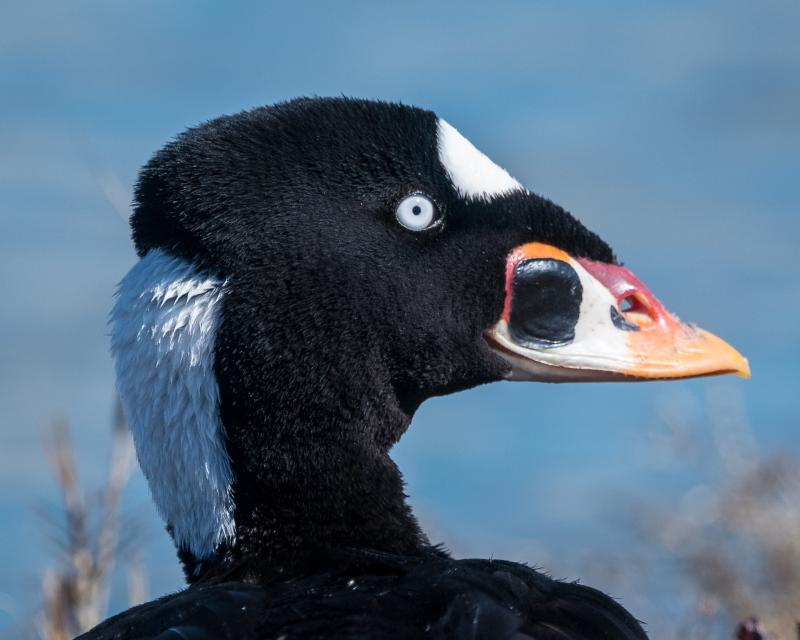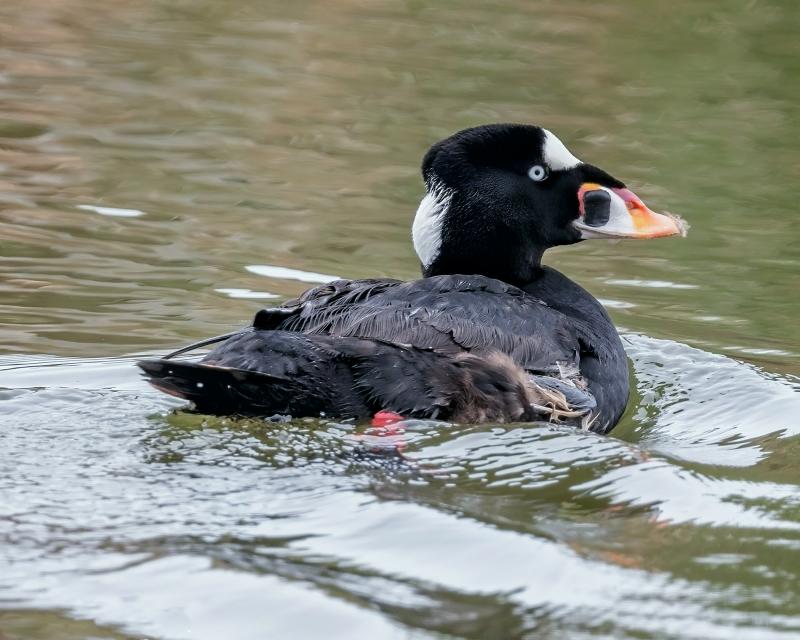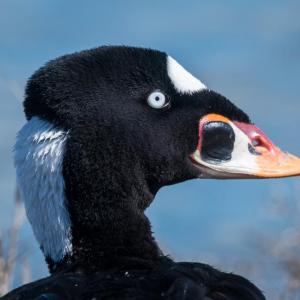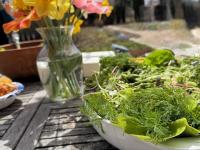The Original Winter Surfers
 Hunters used to call the surf scoter the skunk head because of the bold black and white pattern on its head. Photo by Becky Matsubara courtesy of WIkimedia Commons.
Hunters used to call the surf scoter the skunk head because of the bold black and white pattern on its head. Photo by Becky Matsubara courtesy of WIkimedia Commons.
 Surf scoters are one of the hardy sea ducks that spend winters along the Maine coast. Photo by Susan T. Cook courtesy of Wikimedia Commons.
Surf scoters are one of the hardy sea ducks that spend winters along the Maine coast. Photo by Susan T. Cook courtesy of Wikimedia Commons.
 Hunters used to call the surf scoter the skunk head because of the bold black and white pattern on its head. Photo by Becky Matsubara courtesy of WIkimedia Commons.
Hunters used to call the surf scoter the skunk head because of the bold black and white pattern on its head. Photo by Becky Matsubara courtesy of WIkimedia Commons.
 Surf scoters are one of the hardy sea ducks that spend winters along the Maine coast. Photo by Susan T. Cook courtesy of Wikimedia Commons.
Surf scoters are one of the hardy sea ducks that spend winters along the Maine coast. Photo by Susan T. Cook courtesy of Wikimedia Commons.
A recent Maine-based magazine ran a feature about winter surfing in Maine. That article was highlighting people who enjoy the thrill of grabbing their boards and catching waves in the middle of winter.
But to us, the original winter surfers are ducks. Specifically, surf scoters.
Ducks that spend the winter bobbing in the foamy surf of the icy Atlantic along the Maine coast have always held a special place in our hearts, and, we suspect, in the hearts of generations of those who have lived on these rocky coasts. The so-called “sea ducks” are a hardy lot. Most of the species we see regularly here also occur across the northern coasts worldwide. That’s true of our common and king eiders, long-tailed ducks, and black as well as white-winged scoters (although we will note that more recent work has suggested that Eurasian versions of the latter two may be best considered distinct but very closely related species to those from North America).
But the surf scoter is unique among the sea ducks. It is found only on the North American continent. Surf scoters nest along the shores of shallow lakes across the northern Boreal and Subarctic regions of Canada and Alaska. They migrate south to both Pacific and Atlantic coasts to spend the winter. Here in Maine, small flocks of the birds—the males are jet black with a bold white patch on the back of the head and another on the forehead over a garish bright orange bill—are a regular site scattered along the coast throughout the winter. A glance at eBird showed us that observers have been seeing small flocks of them this month all around the Midcoast area, including around the Boothbay peninsula.
The largest wintering concentrations, however, are farther south, in places like Chesapeake Bay and the coasts of North Carolina, Delaware, and Maryland. One reason that these places probably host so many surf scoters in winter is because of the higher prevalence there of what they like to eat: clams. Studies of the gizzards of hunted birds have found that many eat clams, including, we were surprised to learn, even the long razor clams that most of us know from their distinctive shells on the beach. Who would think that one of these ducks could swallow something like that?
Surf scoters start moving north in March, although their migration reaches its peak in April and early May. Flocks move up along the coast, some moving overland, often following major rivers for part of the way (we have seen flocks of scoters flying high above the Kennebec River in spring headed north). Major stop-over locations in spring include parts of the St. Lawrence and New Brunswick coast.
Satellite tagging of surf scoters along the Atlantic coast in winter has shown that while most may go north into Quebec and Labrador to breed, there are some that travel to western Ontario, northern Manitoba, and even into the Northwest Territories! Males don’t stay long at the breeding sites but leave just weeks later to migrate to a place where they can safely become flightless for a time while they lose their flight feathers and grow ones. The coast of Hudson and James Bays is one of the world’s most important places for surf and other scoters to hang out while they wait out this part of their lives, but some fly back to the St. Lawrence Estuary or to the Labrador coast.
Although scoter populations seem to have declined significantly, they have been hard to monitor. Airplane-based surveys have a difficult time differentiating from among the scoter species; consequently, they have been lumped together in counts. In addition, many of the areas where scoters breed are remote and thus not well-surveyed. But most available evidence points to a decline of more than 40% over the last 50 years.
Maintaining healthy coastal waters and habitats will be important for the long-term survival of these striking birds as will protection of the large intact landscapes of their breeding grounds in the Boreal Forest region of Canada and Alaska.
Jeffrey V. Wells, Ph.D., is a Fellow of the Cornell Lab of Ornithology and Vice President of Boreal Conservation for National Audubon. Dr. Wells is one of the nation's leading bird experts and conservation biologists. He is a coauthor of the seminal “Birds of Maine” book and author of the “Birder’s Conservation Handbook.” His grandfather, the late John Chase, was a columnist for the Boothbay Register for many years. Allison Childs Wells, formerly of the Cornell Lab of Ornithology, is a senior director at the Natural Resources Council of Maine, a nonprofit membership organization working statewide to protect the nature of Maine. Both are widely published natural history writers and are the authors of the popular books, “Maine’s Favorite Birds” (Tilbury House) and “Birds of Aruba, Bonaire, and Curaçao: A Site and Field Guide,” (Cornell University Press).
























